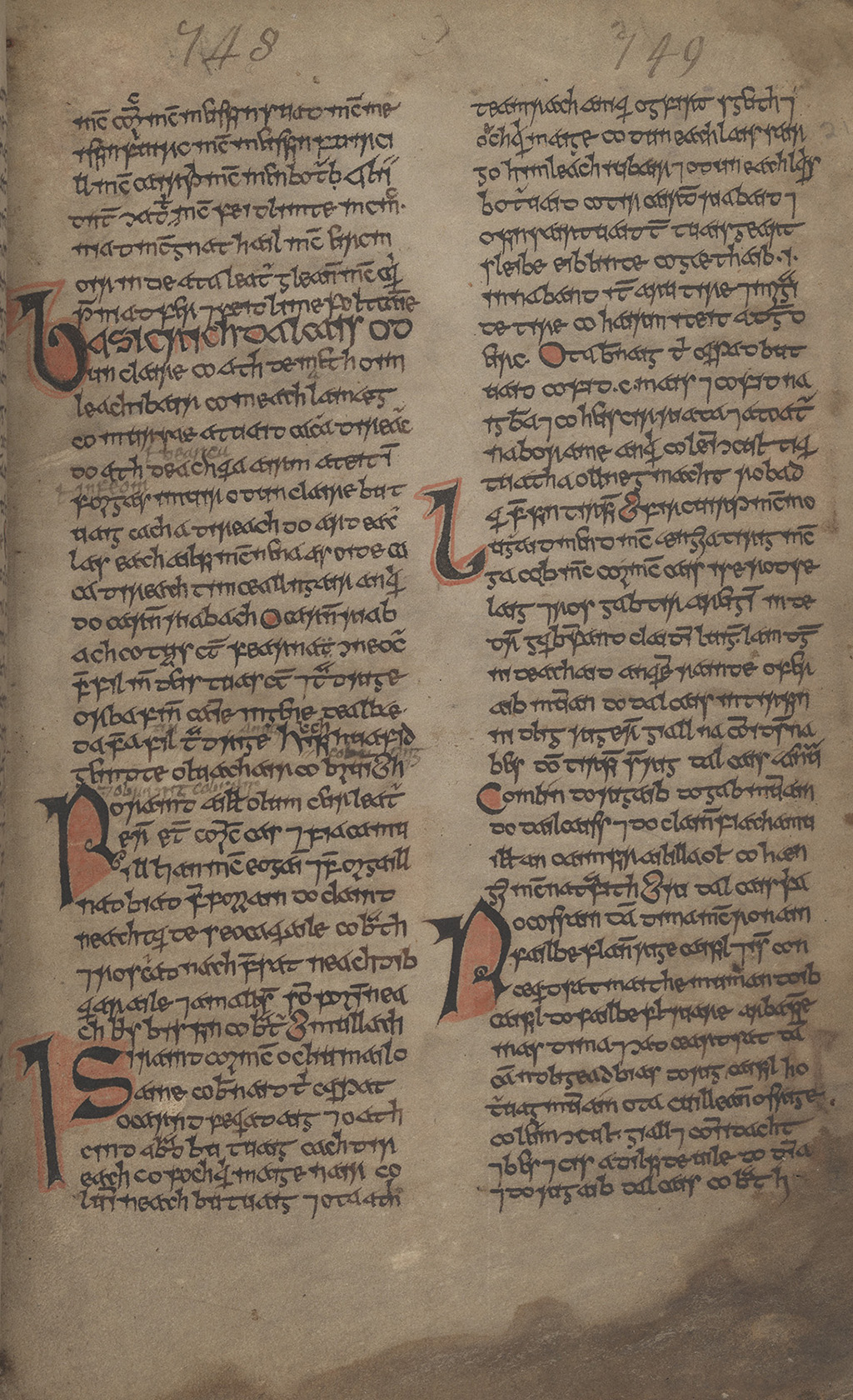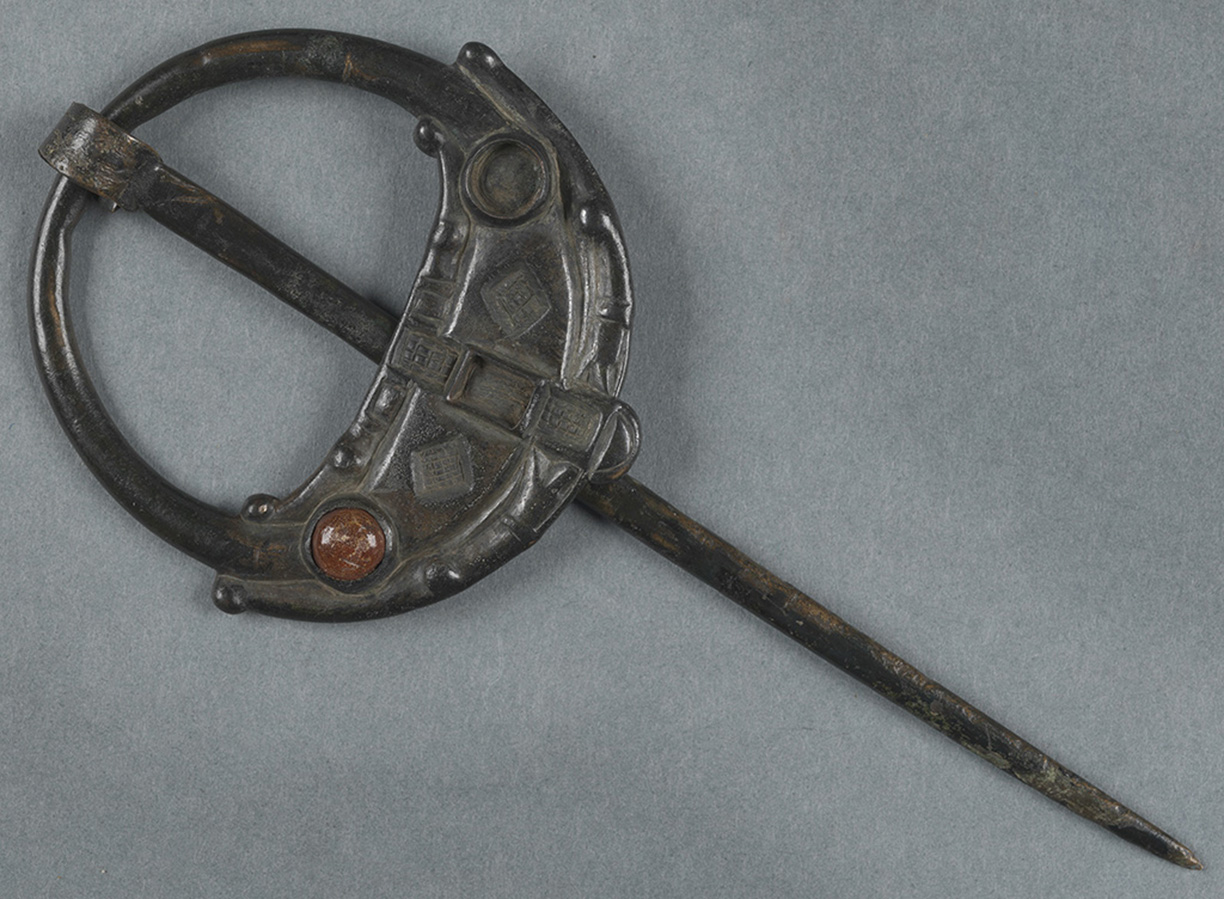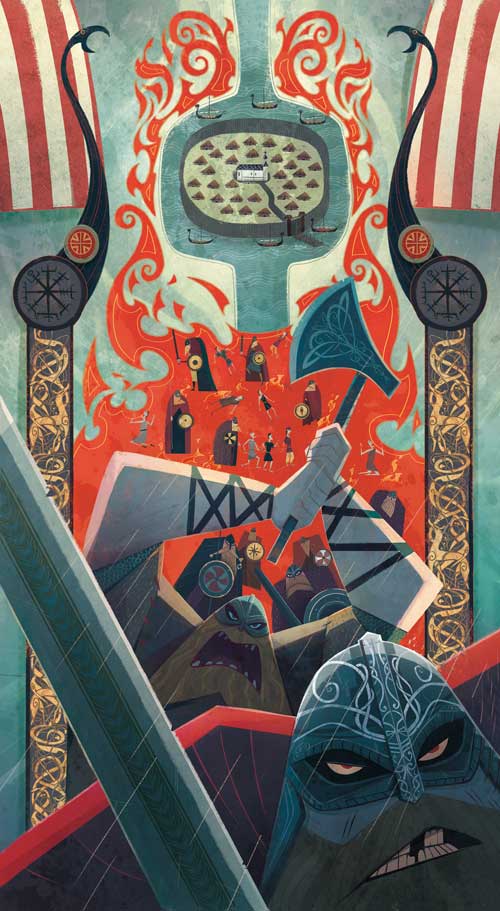The World of Brian Boru
Brian’s people were known as Dál Cais, located in Co Clare, and came to prominence during the Viking era. The first Viking raid on Ireland occurred in 795 and by the 840s the Vikings had begun constructing fortified raiding bases, some of which grew into the modern cities of Dublin, Limerick and Waterford.
The Viking settlement at Limerick lay on the river Shannon near the Dál Cais heartland. In 967 Dál Cais defeated the Limerick Vikings and plundered the city. Brian’s elder brother, Mathgamain, leader of Dál Cais, then used his new-found power to seize the kingship of Munster.
Cogadh Gáedhel re Gallaibh
The War of Irish with the Foreigners
Book of Leinster
12th century
TCD MS 1339 pp 308-309
Cogadh Gáedhel re Gallaibh is one of the earliest and most important sources for the life and legend of Brian Boru. It portrays Brian as a hero who resisted Viking invaders, and eventually became king of Ireland. Finally, in Christ-like fashion, he laid down his life for his people at the Battle of Clontarf, on Good Friday 1014.
The tale was produced as propaganda for Brian’s descendants, some of whom took the name Ó Briain (anglicised O’Brien) to emphasise their direct descent.
Dál Cais Territory
14th/15th century
TCD MS 1336/6 f 216r
This text outlines the supposed extent of Dál Cais territory, the O’Brien powerbase, in counties Clare, Tipperary and Limerick.
A subsequent reader has added interlinear text. He was familiar with the area delineated, as some of his notes offer alternative spellings of the place names mentioned in the text.
Pseudo-penannular Brooch
9th/10th century
TCD MS OBJ/2013/3
Although the popular impression of Viking-age Ireland is dominated by images of conflict, this brooch’s mixture of Viking and Irish decorative styles is indicative of a long tradition of peaceful cultural and artistic exchange. The brooch had two amber studs, one of which is now lost. Much of medieval Ireland’s amber was imported from the Baltic, and archaeological evidence indicates that Viking Dublin was the point of entry into Ireland for such luxury materials.




